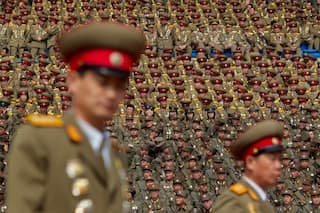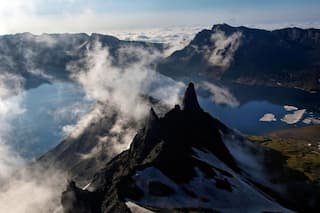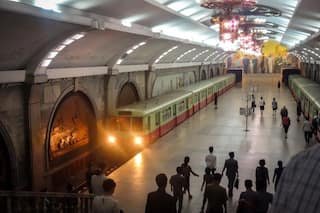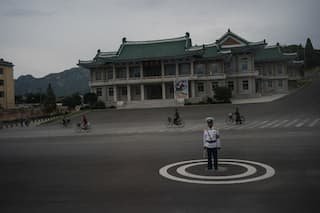As tensions between North Korea and the U.S. mount, curiosity about what life is like there has increased.
By Heather Brady
PUBLISHED JANUARY 3, 2018
There’s a lot about North Korea that the world doesn’t know, largely because of the governing regime’s intense control over its citizens and its wary approach to outsiders. But between satellite images, North Korean citizens who fled to other countries, and the small number of people who have managed to visit, a picture of everyday North Korea has slowly emerged.
THE MILITARY IS PART OF RESIDENTS’ EVERYDAY LIVES (A REALLY DEEP PART).
“You see them everywhere. They’re not just the country’s defense, they’re part of North Korea’s entire identity,” National Geographic photographer David Guttenfelder says.Soldiers are involved in development and infrastructure projects, and Guttenfelder captured their importance in daily life in Pyongyang. Guttenfelder, one of few westerners who has spent extensive time in North Korea from 2000 to the present, was invited to North Korea’s annual Mass Games performance and the highly choreographed military demonstrations of goose-stepping soldiers and artillery on parade.
Everyone at the event has a role to play, including the spectators, who use color flip-books to make grand mosaics from the stands. The images are usually tributes to the country’s leaders, or simply the military at larg
A VOLCANO ON THE PENINSULA COULD ERUPT.
Sprinkled with villages and blueberries, the sacred and beautiful volcano Mount Paektu has been rumbling in recent years, prompting an international effort to study its underbelly.
A millennium ago, Mount Paektu exploded with a fury rivaling the largest eruptions in recorded human history, hurling crackling rocks and ash as far away as Japan. Despite that violent outburst, Mount Paektu—or Changbai, as it’s called in Chinese—remains fundamentally mysterious. Few outside the region are even aware it exists. And no one knows if, or when, the 9,000-foot-tall peak might erupt again.

SUBWAYS IN PYONGYANG ARE ELABORATE.
Only two of the subway system’s stops were initially open to tourists, prompting the idea that the stops were part of an elaborate setup. Then the government opened all 17 stops to tourists in late 2015, with surprising results.
Melody Rowell wrote in a National Geographic article that commuters who descend the 316 feet below the city’s central business district are accompanied by a soundtrack of patriotic anthems playing over antique loudspeakers. They pass through thick steel doors that enable the stations to double as bunkers in the event of a nuclear disaster. Each station, named not for a geographic landmark but rather a socialist buzzword, features some combination of gilded statues of Kim Il Sung, detailed mosaic murals, bronze plaques commemorating North Korean military victories, and whimsical chandeliers.

Reference
Heather Brady

Hi! I am a robot. I just upvoted you! I found similar content that readers might be interested in:
https://news.nationalgeographic.com/2017/09/north-korea-pyongyang-life-culture-tourism-spd/